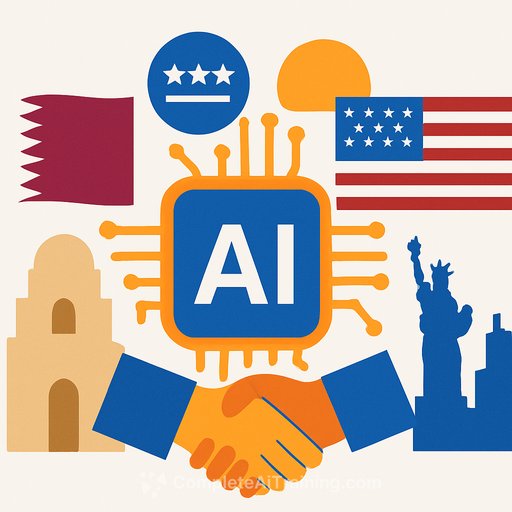Qatar signals AI-heavy U.S. deal flow as UK-Gulf trade pact nears completion
Qatar's finance minister, Ali Ahmed Al-Kuwari, said AI will anchor Qatar Investment Authority's future allocations in the United States, pointing to where the growth - and returns - are stacking up. Speaking in Riyadh at the Future Investment Initiative conference, he said "most" of QIA's investments will target technology and AI.
He added that U.S. economic momentum is being led by tech and AI, and that's where Qatar plans to focus. The move also supports Doha's push to diversify away from hydrocarbon income.
AI anchors QIA's U.S. allocation
QIA plans to at least double its annual U.S. investments over the next decade and has already pledged $500 billion into the U.S. economy across 10 years. The mandate is clear: scale into AI and tech where capital can meet outsized demand for infrastructure and software.
Expect capital to gravitate toward data centers, semiconductors, cloud infrastructure, enterprise AI software, and cybersecurity - the "picks and shovels" with durable spend and clearer unit economics. For deal structuring, look for a mix of direct stakes, co-investments with large U.S. platforms, and selective fund commitments to accelerate deployment.
What this means for finance teams
- Second-order effects: tighter supply in H100-class compute, higher data center buildouts, and extended capex cycles benefiting utilities, real estate, and specialty financiers.
- Valuation discipline matters: AI winners are scarce, but multiples already price a lot. Focus on cash flow visibility and backlog quality.
- Policy risk sits in the background: export controls, data residency, and security reviews can shift deal timing and scope.
UK-Gulf trade deal "almost done"
Alongside UK Chancellor Rachel Reeves, Al-Kuwari said the UK-GCC agreement is "almost done." Reeves said she'd had "really good" meetings and is confident the deal can be wrapped up quickly to support her growth agenda.
For capital markets, the agreement could lower friction for goods and services, improve market access, and catalyze cross-border investment in energy, infrastructure, and financial services. Watch tariff schedules, services chapters, and rules of origin - small rule changes can swing margins for exporters and service firms.
- Potential beneficiaries: UK professional services, advanced manufacturing, energy transition projects, and insurers/banks supporting trade finance.
- Key signals: publication of draft texts, implementation timelines, and any carve-outs on data or financial services.
Risks and watchpoints
- AI infrastructure execution risk: supply chain bottlenecks, energy constraints, and delivery slippage.
- Policy and geopolitics: U.S.-China export rules, regional tensions, and national security reviews.
- Market concentration: a small set of platforms captures most AI spend; concentration risk needs hedging.
- Cycle timing: if growth cools, premium multiples can compress faster than models assume.
Next steps for allocators
- Map exposure to AI "picks and shovels" (compute, power, cooling, networking) with a margin-of-safety screen.
- Track QIA partnerships and filings for signals on subsector priority and ticket size.
- Prepare UK-GCC scenarios: tariff impacts, services access, and potential FX and rate spillovers.
Go deeper: UK-GCC FTA negotiation updates are published on the UK government site here: official collection.
Exploring practical AI tools for finance teams? See a curated set here: AI tools for finance.
Your membership also unlocks:





